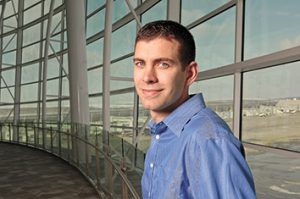Tickets still remain for Butler-Duke game
National ticket search engine says about 4,500 remained Monday morning for the NCAA championship game at Lucas Oil Stadium.
National ticket search engine says about 4,500 remained Monday morning for the NCAA championship game at Lucas Oil Stadium.
 Butler is winning the war of merchandise sales, leading the other three
Butler is winning the war of merchandise sales, leading the other three
schools in the Final Four. A victory tonight, sports marketers said, would increase those sales fivefold.
As is the case at Duke, Butler graduates about 90 percent of its players. As is the case at Duke, there’s more than mere lip
service paid to the classroom at Butler.
Indiana and Purdue may be the state's traditional basketball powerhouses, but it's little Butler—enrollment 4,200—that's big time now. Butler is writing a Hollywood hoops script, a sequel to "Hoosiers."
The NCAA and city put together a deal to cover insurance and liability issues for this year’s Final Four, but are still finalizing
an agreement that assures the event comes back regularly through 2039.
 A debate rages over how Butler's spot in the Final Four will blunt the event's economic impact. But predicting the Final Four's true impact is fraught with unknowns.
A debate rages over how Butler's spot in the Final Four will blunt the event's economic impact. But predicting the Final Four's true impact is fraught with unknowns.
The NCAA appears to be on the verge of expanding the men’s basketball tournament to 96 teams.
Butler University basketball coach Brad Stevens has an annual base pay of $350,000 with another $37,851 in benefits and deferred
compensation. Not bad for a 33-year-old. But it’s no comparison to what big-time men’s college basketball coaches make.
Itâ??s all about the whole, not the parts. They cut and move, move, move on offense. They defend like their scholarships depend on it.
Mediocrity in the athletic department was tolerated by the administration, winning wasn’t a priority and Tony Hinkle’s
five principles—humility, passion, unity, servanthood and thankfulness—had not been adopted as “The Butler
Way.”
Fans decked out in blue crowded Monument Circle and spilled onto Meridian Street in downtown Indianapolis, cheering on the
hometown Butler Bulldogs as they prepare for their first NCAA Final Four. Check out our photo gallery here.
Money proving to be a powerful motivator in earning Big Ten's support of NCAA tournament expansion plan.
Ticket brokers say a flood of tickets became available on the secondary market following losses by the No. 1-seeded Kansas
Jayhawks and Kentucky Wildcats.

The biggest chance Brad Stevens ever took, the best game plan he ever drew up, had nothing to do with a prized recruit or
some brilliant set of Xs and Os scrawled out on a greaseboard. It came on the day he decided to quit his job at Eli Lilly
and
Co. and to pursue his first love, basketball.
Butler's triumph has likely eliminated some of the direct visitor spending the city would have seen if Syracuse or Kansas
State would have made it to Indy for this year's Final Four. But corporate excitement could wipe away that loss.
About eight hours after Butler beat second-seeded Kansas State 63-56 to reach the first Final Four in school history, the
Bulldogs returned home to a large crowd and loud cheers.
Corporate hospitality at sports events has been stagnant in recent years, but organizers expect a big bounce for this year’s
NCAA Final Four in Indianapolis.
Besides an immediate bump in apparel sales, the university is expecting a jump in student applications, alumni contributions
and season-ticket sales, as well.
Lineup features Darius Rucker and Daughtry.
The goal of any host city of a major sporting event is simple: Rake in as much cash as possible during the days the event
is in town and maximize future economic potential by boosting the city’s image among everyone who watches on television.
Execution is more difficult.